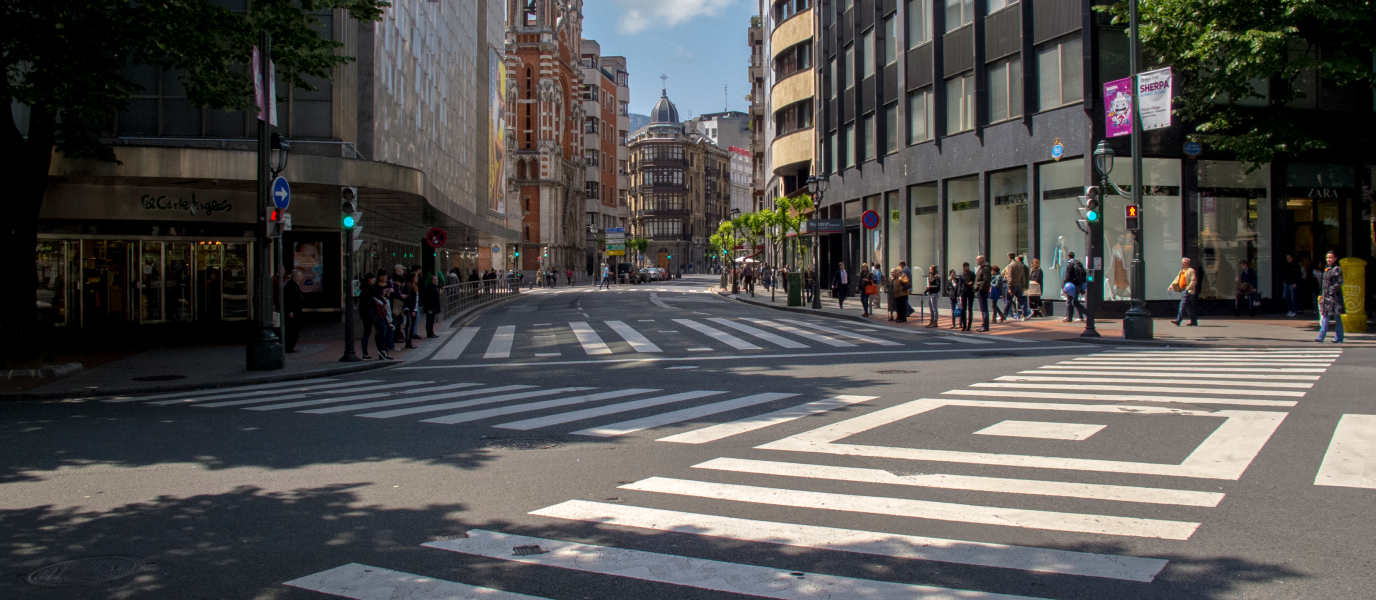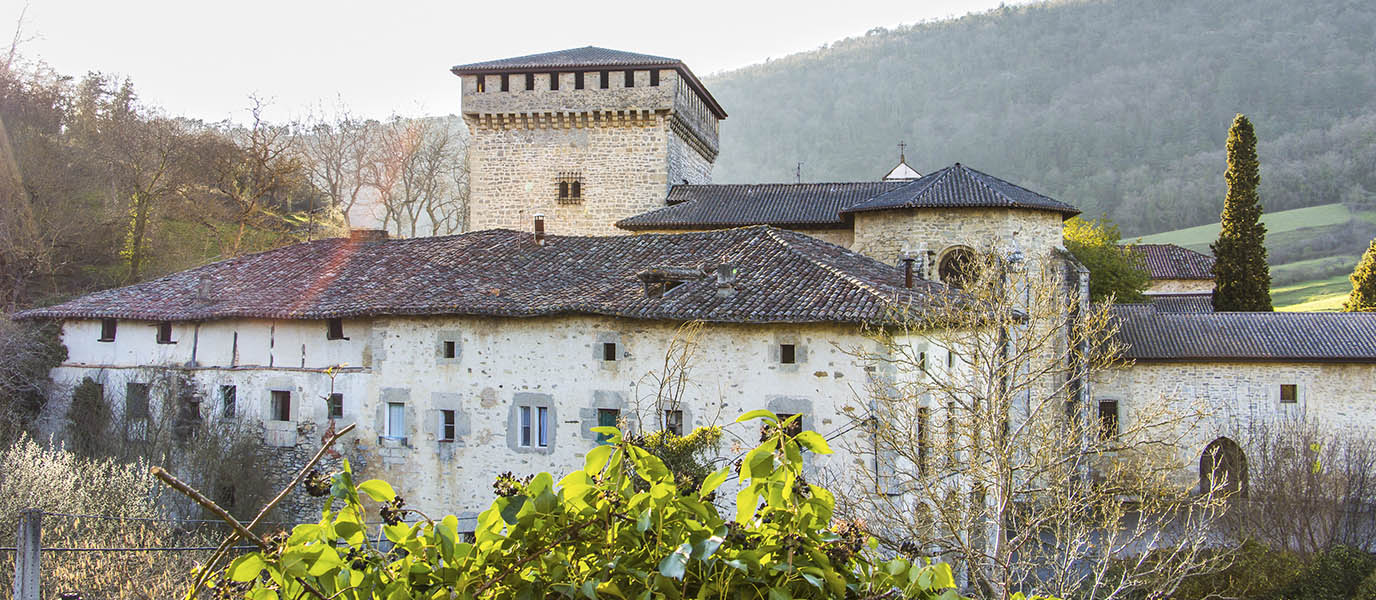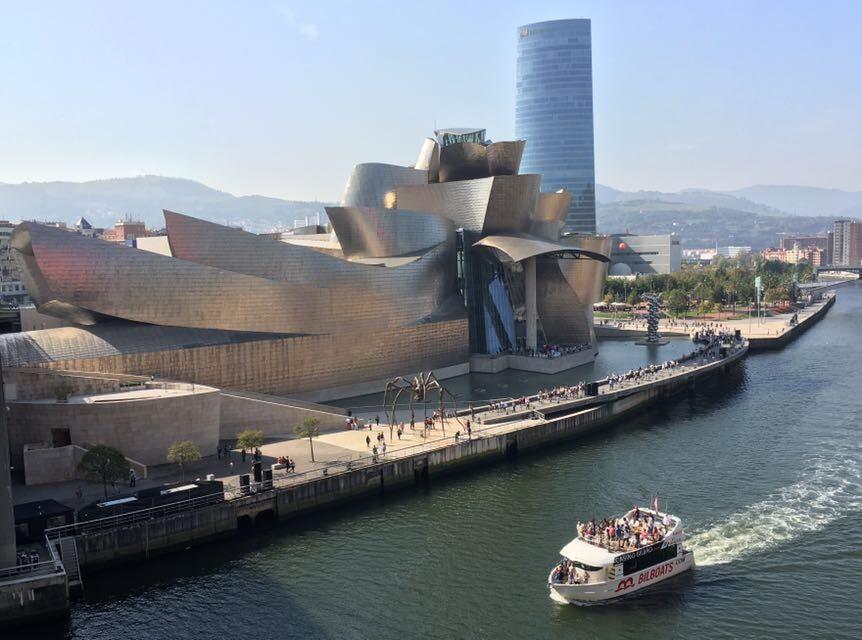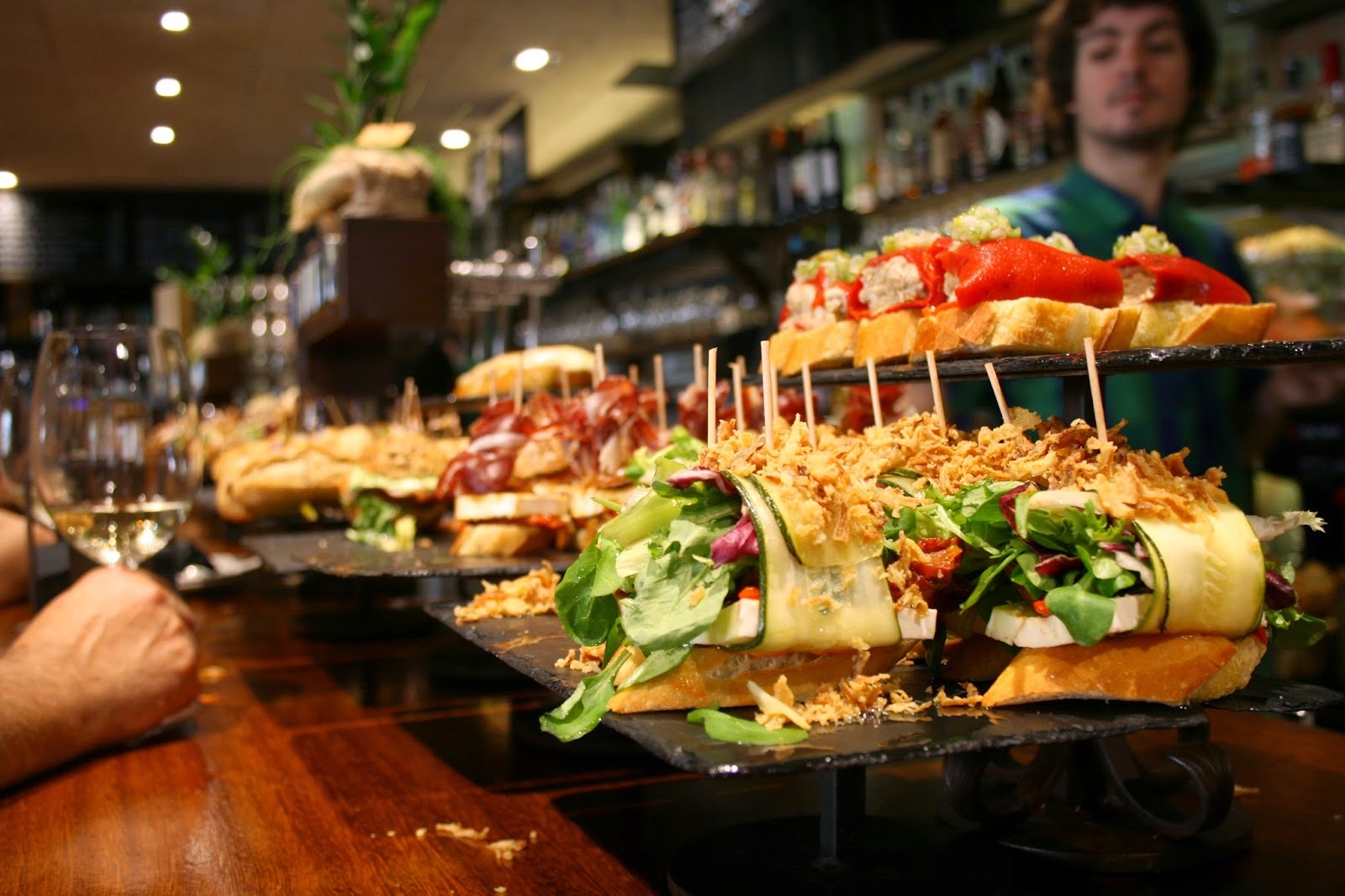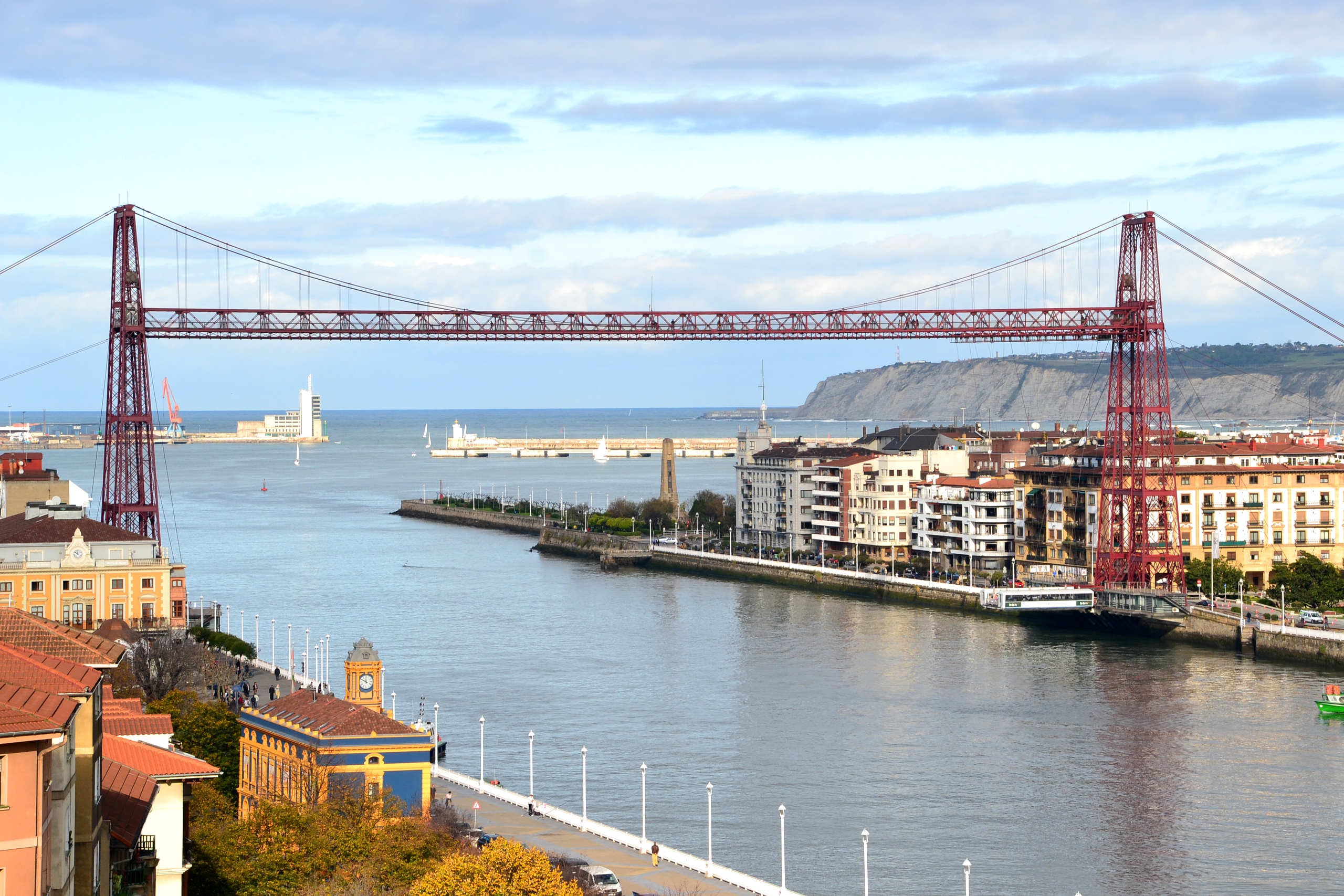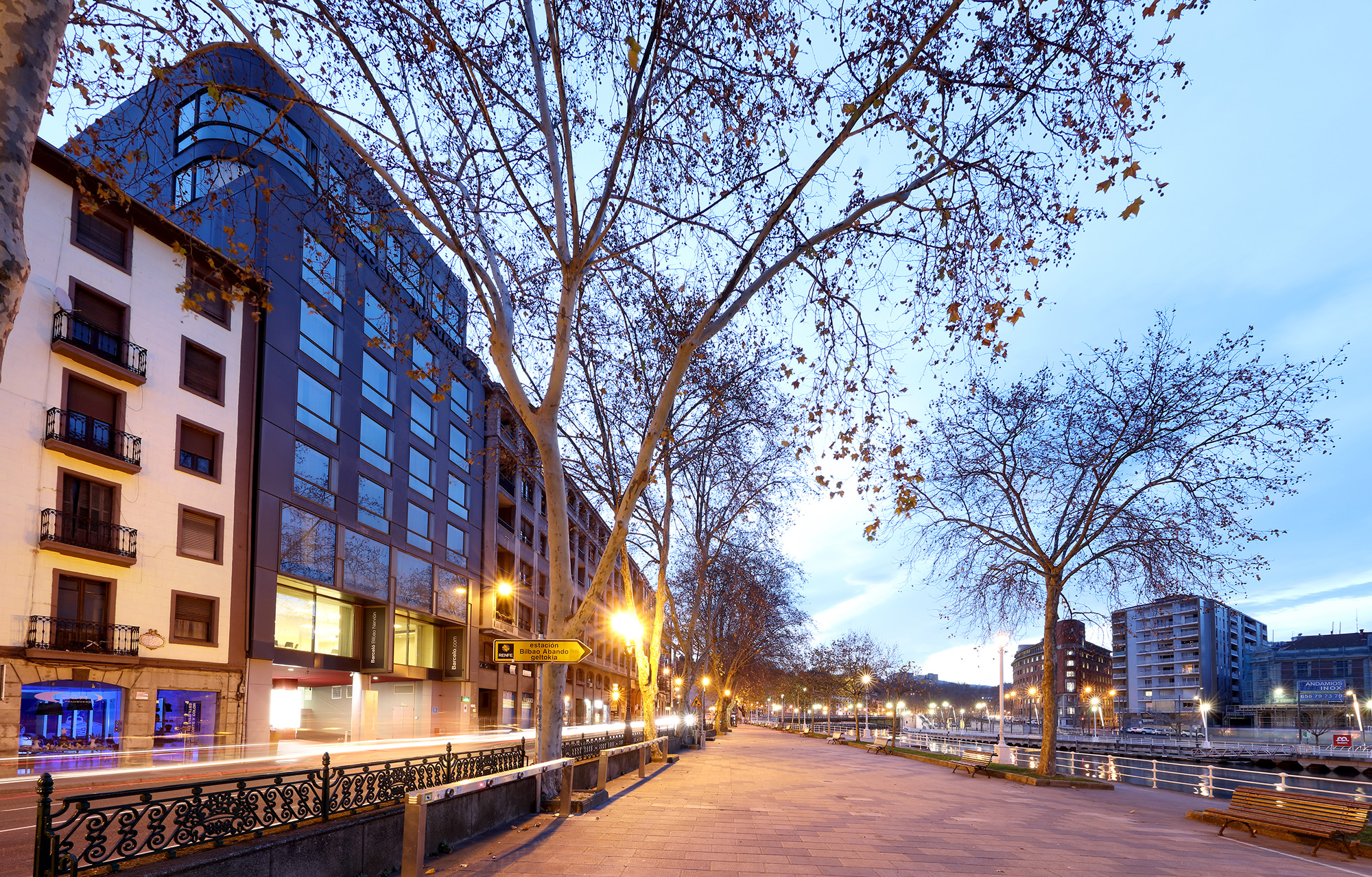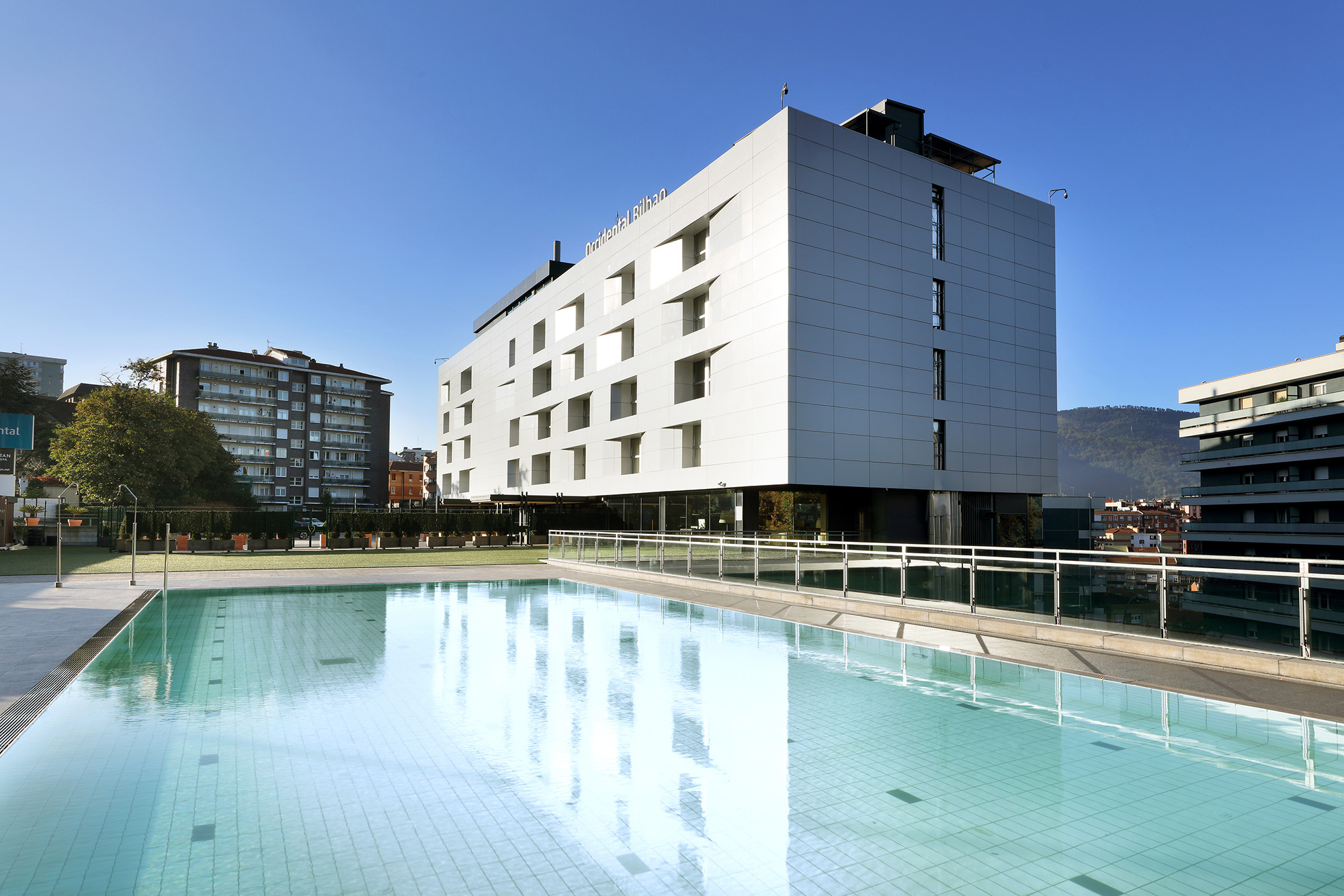Since its construction began in the mid-19th century the Gran Vía in Bilbao has captured the city’s attention. Officially known as Gran Vía de Don Diego López de Haro—after the man who founded the town in 1300—this long, wide avenue allowed Bilbao to expand beyond the estuary, creating the city’s new bourgeois neighbourhood: Ensanche de Abando. Now, some 140 years later, Gran Vía is the true centre of the city as well as its main commercial hub. Often dubbed Bilbao’s “Golden Mile”, it’s home to countless exclusive boutiques, major banking institutions, public offices, antique shops and art auction houses. A stroll down Gran Vía reveals historical buildings like the Chávarri Palace or the Bizkaia Delegation Palace. The area also boasts an extensive and wide range of places to eat on Gran Vía and nearby streets like calle Diputación and calle Ledesma.
The history of Bilbao’s Gran Vía
Walking Gran Vía’s 1,500 metres feels a bit like travelling through time. Its majestic streets, flanked by 19th-century buildings whose beauty remains undiminished, take you back to 1861, when Queen Isabel II approved the Expansion Law.
From that moment on, the Bilbao City Council received a wide variety of project proposals from renowned architects. After several failed plans, in 1876, the architect Achúcarro’s proposal, presented with engineers Pablo de Alzola and Ernesto de Hoffmeyer, was chosen. With an ambitious layout and a fresh attention to detail, Gran Vía marked the beginning of the development of what is now the Abando district, then the new residential area for Bilbao’s bourgeoisie.
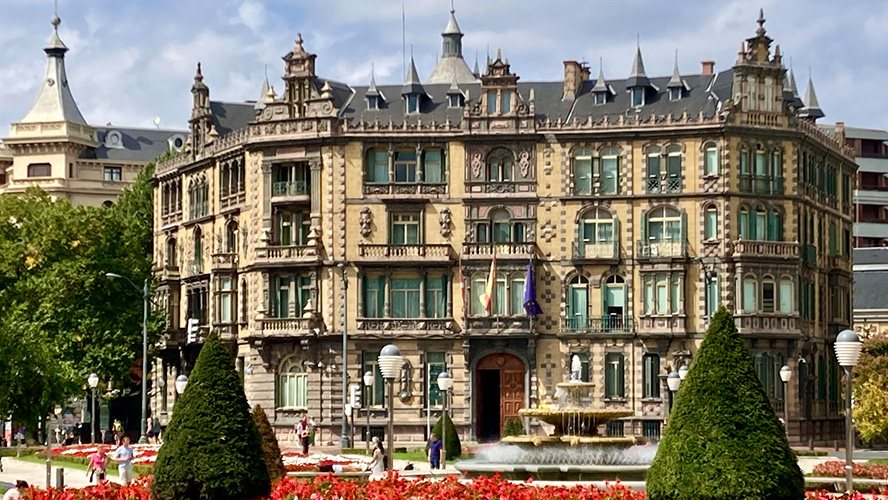
After a century of existence shaped by the dynamics of the Basque industrial sector, in 2000 Bilbao’s Gran Vía underwent a partial pedestrianisation process, consolidating its position as the city’s administrative and commercial centre.
What to see on Bilbao’s Gran Vía
If you’re heading from the Old Town across the Arenal Bridge, you’ll soon reach Plaza Circular, Gran Vía’s starting point. At its centre stands a statue of Don Diego López de Haro, after whom Gran Vía is named. Among the façades overlooking the square is the Tourist Information Office, which we highly recommend you visit before you set out on your walk.
Gran Vía stretches straight on from here for one and a half kilometres. However, there are two clearly distinct sections of the route. The first one, which is more commercial, reaches the landscaped Plaza Federico Moyúa, where many main streets converge. The second section goes from this square to the Sacred Heart monument, near the famous San Mamés football stadium.
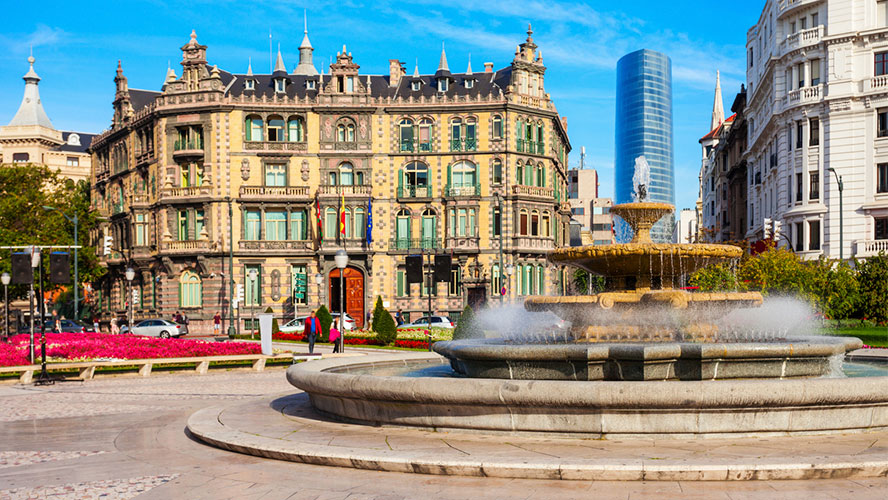
Plaza Federico Moyúa
We recommend that you enjoy a pleasant stroll along Bilbao’s Gran Vía and keep an eye out for the many historical buildings lining the street. In particular, we would like to highlight the Bizkaia Delegation Palace (no. 25), built in the late 19th century in an eclectic style and adorned with elaborate exterior decorations. Another striking building is Chávarri Palace (no. 5), completed in 1888 and has been the seat of the Government of Bizkaia since 1943. One of its most delightful features is that none of its windows are the same as its neighbour’s. Other noteworthy buildings include the Sota Houses (no. 45), designed in 1920 in a regionalist style and declared a historical-artistic monument. Some of these structures now home to prominent banking institutions, such as BBVA and Kutxabank.
Gran Vía also connects to some of Bilbao’s green spaces, like Albia Gardens and Doña Casilda Iturrizar Park, where you’ll find the Bilbao Museum of Fine Arts.
Main shops and businesses
Although the historic buildings are a sight to behold, the real attraction here is the wide variety of shops. It is no coincidence that Gran Vía is Bilbao’s busiest shopping area. In addition to bookshops, sports shops and shoe shops, you’ll find department stores like El Corte Inglés, popular fashion and accessory brands including Zara and Lacoste, designer boutiques like Álvaro Moreno and jewellers such as Pedrori and Suarez.

Gran Vía is also home to exhibition spaces, such as Yimby. There are also cultural venues, including Sala BBK, which hosts nearly 270 cultural events, such as concerts, theatre performances and film screenings each year.
Lastly, it is worth mentioning the many antique dealers and auction houses in the area around Gran Vía. One example of this is Subastas Gran Vía de Bilbao (Licenciado Poza, 9), which holds four auctions a year, including exhibitions of the items up for sale.
Restaurants and where to eat
We know that shopping can be tiring, so here are some bars and restaurants in the area that will definitely help you to recharge at any time of day. If we start our route at Plaza Circular, in the nearby Albia Gardens, we can visit the legendary Café Iruña (calle Colón de Larreátegui, 13), an establishment that dates back to 1903, serving pintxos morunos (pork skewers) grilled over charcoal right before your eyes, in a setting that blends bullfighting décor with the Mudéjar style. Nearby, on calle Ledesma, you’ll find Taberna Magnum (calle Astarloa, 5), inspired by old Basque taverns, where pitchers of wine and endless cured meats are on offer.
If you continue toward Plaza Moyúa instead, you’ll have the chance to wander along calle Diputación, perpendicular to Gran Vía. Here you’ll find many pintxo bars, such as El Globo (Diputación, 8) and La Viña del Ensanche (Diputación, 10). There are also cocktail bars like Sojo (Rodríguez Arias, 3).
Lastly, as you approach Plaza Sagrado Corazón de Jesús, we recommend Café Estoril (Plaza Campuzano, 3), a classic for its vermouths and traditional pintxos. For something different but equally delightful, Baka Vieja Burger Shop (Gran Vía, 1) serves up some of the city’s best burgers.




































































